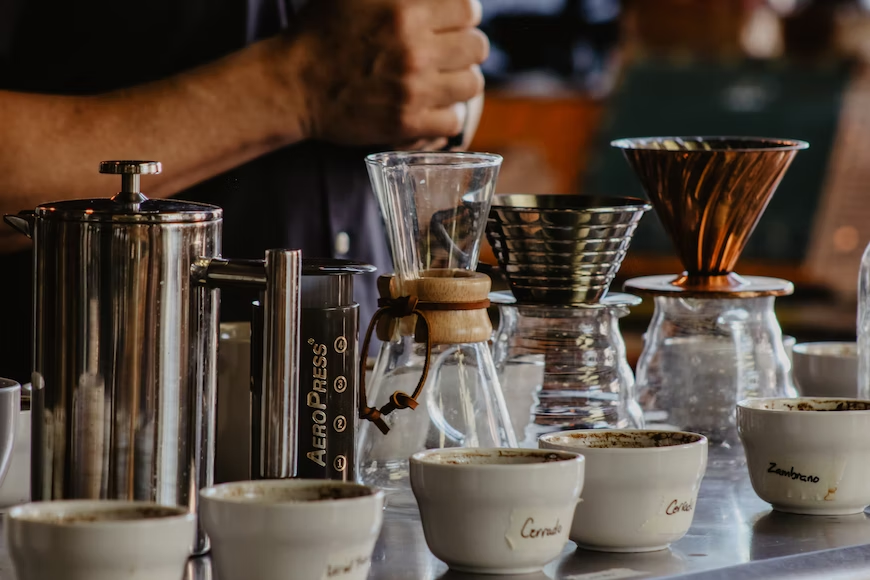If you are a coffee lover, you may have come across the term “coffee cupping” at least once, as it is frequently used among people who like to drink various kinds of coffee, especially baristas. If you are not familiar with this term, you may have seen some events or articles somewhere that show people trying different types of coffee at once, and that’s a glimpse of what coffee cupping is.
You may also wonder what the purpose behind tasting different types of coffee in various cups at once is or what benefits this method of coffee cupping has on daily consumers and professionals. This article will give you a brief overview of what coffee cupping is and discuss its significance.
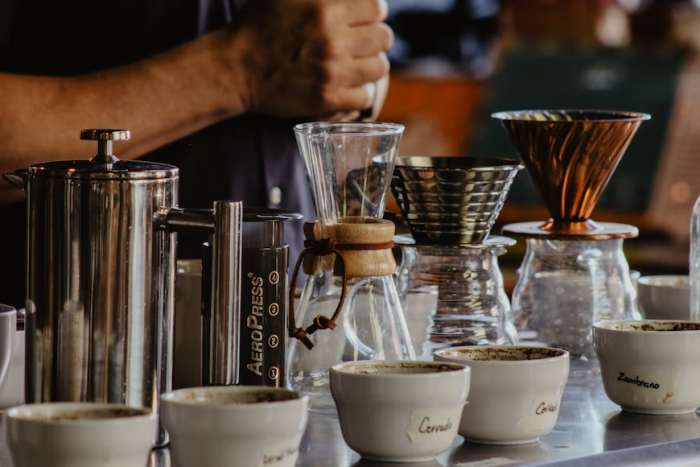
Contents
What is Coffee Cupping?
Before getting deeper into the importance of coffee cupping, it is essential to understand what coffee cupping is and its history. Coffee cupping refers to a method in which people taste different types of coffee from several cups. Coffee cupping depends on two main pillars, including repetition and comparison.
Firstly, all the coffee beans are brewed using repeated equipment and methods. For instance, there is a standardized roasting degree, brew ratio, and duration. There is no difference in the process of brewing the coffee to ensure a fair comparison. However, the samples can collect beans from different origins or different types to get the tasters to experience a more diverse taste.
The second pillar is comparison. Tasters would compare the coffee samples according to context and contrast. Context refers to the common standard to test the coffee beans, such as coffee beans from South America or Kenya, allowing the tasters to focus solely on individual features. Moreover, contrast basically differentiates the quality and the characteristics of the samples. The method enables the tasters to evaluate different kinds of coffee beans according to their overall taste and specific features, including acidity, sweetness, or richness.
The history of coffee cupping dates back to the late 1800s when the suppliers or retailers would taste different varieties of coffee to select which was best to buy and had better consistency. After, in the late 1990s, coffee cupping turned into a competition that resulted in various coffee specialists and created guidelines for the international coffee market.
Benefits of Coffee Cupping
After understanding the brief concept of coffee cupping, you may wonder about its benefits and why people adopt this method. Coffee cupping offers many benefits, especially to coffee lovers and professional coffee specialists. Below are some of the advantages of cupping.
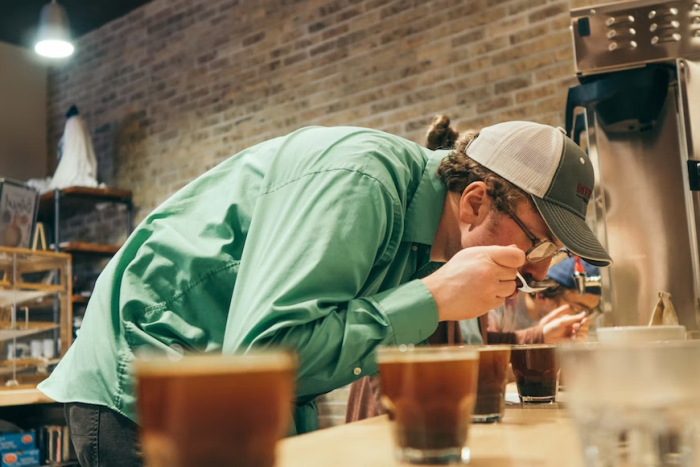
Know Your Taste Better
Most people, especially those new to drinking coffee, do cupping at home to understand their taste palette and preferences better. It is logical because you do not want to just stick with a type of coffee you heard from someone or saw reviews that are good and not try other coffee. Coffee cupping can also make you learn the flavors of each coffee more efficiently according to your preferences.
Many tasters at home do cupping blindfolded so they can compare and note the taste accurately. After each cupping, many say that they know more about the flavors of the coffee, and sometimes it is different from the description on the coffee bag. Moreover, you not only taste different types of coffee but can also differentiate the taste when brewing using other methods. For instance, brewing using aerospace might taste better than a French press. Hence, cupping is beneficial for coffee lovers to choose the right coffee choice and even brewing methods.
Maintain Product Quality
Product quality is critical and essential for coffee industry professionals, including baristas and coffee specialists. Professionals who have coffee products or cafes need to control the quality of coffee to ensure qualified taste and market them effectively. For instance, in cases of bad coffee beans, such as sour or burnt, doing coffee cupping would be crucial to avoid any errors or to offer coffee that would affect the reputation of the coffee brand.
It is also vital for coffee roasters, as they can know the coffee designation and blend more taste and flavors. Coffee roasters need to select the highest quality coffee beans aligning to guidelines, which can be done by coffee cupping as they can choose the perfect combinations and drop the coffee that is not fit to standard. Moreover, baristas need this skill to understand more flavors and advertise or market them better.
Avoid any Errors
Errors come in all forms in this coffee industry. It is true that different coffee beans have different tastes, but other mistakes come along, such as buying low-quality coffee with a sour or burnt taste. Some coffee drinkers also mistake buying coffee grounds rather than coffee beans, resulting in a different and unenjoyable taste. Moreover, measurement can be a common mistake for coffee drinkers and new baristas. Not to mention, some use coffee makers that do not fit the type of coffee beans. Hence, by implementing coffee cupping, the tasters can identify and change unwanted errors accordingly.
How does Coffee Cupping work?
After knowing the concept of coffee cupping and its benefits, you might want to understand the process and how to prepare it. You can conduct a coffee cupping using several steps below.
Equipment
The first and most important thing you need for coffee cupping is the right set of equipment. The necessary equipment includes several cups or bowls, a scale, a kettle, spoons, a napkin, water, and a pen. It is also important to note that having a large space set up that is bright and has no aroma. Moreover, the room needs to be quiet to avoid any loss of concentration.
What’s more, you should use all cups that are in the same proportions and volumes and made of the same materials to ensure equal heat, water ratio, and consistency. Additionally, equipment should be of high quality as low-quality products, for instance, coffee grinders, would affect the taste of your coffee.
Evaluation Form
The evaluation system is vital to score and take note of the taste of the coffee. Most professionals and general coffee lovers use the SCA cupping evaluation form, but you can also use other certified evaluation methods you found. It is vital to familiarize yourself with the evaluation form because it will give you a glimpse of what criteria to look for during the process.
Grind the Coffee Beans
After preparing the equipment and understanding your evaluation form, you may start the process by grinding the coffee beans into small coarse grinds and pour into different cups, and each cup is measured to 12g.
After having cups of grind coffee, you may want to smell each of the cups as it would already bring out an aroma that differentiates the characteristics of each cup.
Brew the Coffee
Then, you can start brewing the coffee by pouring hot or boiling water into the cups of coffee. The right amount of water should be around 200 ml, and keep the coffee steam for about 4 minutes without touching or stirring it. It is important to note that you should pour the water on the coffee grounds steadily to release full flavors from the coffee. After brewing the coffee, you should smell the brewed coffee again to see whether there is a change in the scent or aroma.
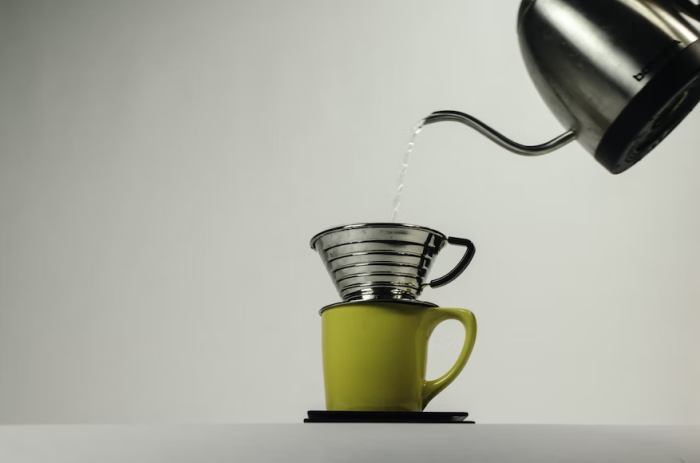
Stir and Skim the Coffee
After 4 minutes, you can now stir your coffee carefully until the bottom of the cup and stir in motion. After that, you can leave the coffee for 10 minutes. You should remember to clean your spoons after stirring from one cup to another. Next, you need to remove the ground by skimming it using two spoons to ensure convenience when drinking.
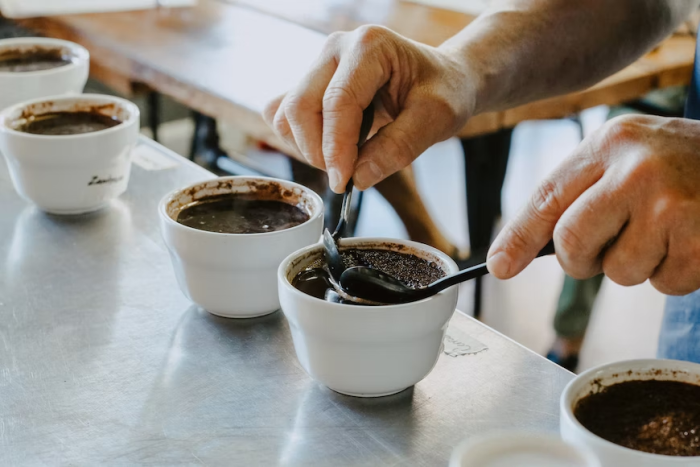
Taste
Now, you can taste the coffee after the mentioned processes by using a coffee spoon, putting it into your mouth quickly until it fills your palette then spitting it out. Before tasting the coffee, note the level of sweetness, acidity, body, and, finally, finish.
The acidity refers to the flavors that give you a light and fresh sensation on your tongue. Moreover, the level of sweetness is easy to identify, which is how sweet the coffee is. For instance, riper coffee beans give a sweeter taste. Additionally, the body of a coffee is the feeling you receive after the sip. For example, you may feel light or heavy, silky or rough, enjoyable or not. Finally, the finish is the after-taste of the coffee. Many say that a good coffee gives an excellent savory finish.
Conclusion
In conclusion, coffee cupping is essential for both coffee lovers and professionals who work in the coffee industry. It is an analytic method that allows coffee tasters to identify and evaluate different flavors of coffee. It has various benefits ranging from knowing your taste better to choosing a perfect choice, controlling coffee’s quality for marketing and branding purposes, and avoiding or correcting mistakes you may have made. Finally, coffee cupping may be enjoyable to try as you can experience various coffee types and get to know coffee better.
References
- A Beginner’s Guide to Cupping Coffee & Improving Your Palate | Perfect Daily Grind |
- Coffee Cupping: The Beginners Guide (How To Do It At Home) | Homegrounds |
Check out: How To Cup (Taste) Coffee At Home By James Hoffmann
